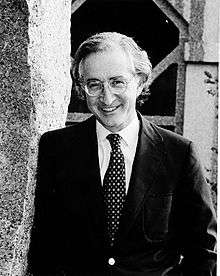Milo C. Beach

Milo Cleveland Beach is an art historian and the former director of the Arthur M. Sackler Gallery and the Freer Gallery of Art.
Beach is a historian of Indian art, specifically Indian painting.[1][2] He graduated from Harvard College and credits the music of Ravi Shankar for garnering his interest in Indian culture. Before earning his Ph.D. at Harvard, he was already a curator at the Fogg Art Museum and Boston Museum of Fine Arts.[3]
He served as the chair of the art department at Williams College.[4] He became director of the Smithsonian Institution's Arthur M. Sackler Gallery in 1984.[1][4] He supervised the opening of the Sackler Gallery and acquired loans for the opening exhibitions from the government of China, the Queen of England, Elizabeth II, Emperor Shōwa, the Topkapi Museum, and the Hermitage Museum. A $26 million renovation of the Freer also took place during his tenure.[3] Beach curated numerous exhibitions, including the collection of painter Howard Hodgkin, Japanese pop art, the art of Hiroshima Kazuo, and contemporary pottery.[3]
In 1993, Beach published his research on the British Royal Collection's 17th-century manuscript of the Padshahnama. The Royal Librarian described the publication as the "best catalogue ever produced for an exhibition from Windsor Castle."[3] In October, 2001, Beach retired as the director of both the Sackler and the Freer Gallery of Art. Beach returned to research, specifically focusing on the work of the Mughal Empire.[3]
References
- 1 2 "Milo C. Beach". Smithsonian Institution Archives. Retrieved 10 May 2012.
- ↑ "Director at Sackler and Freer Named". The New York Times. 24 October 1988. Retrieved 11 May 2012.
- 1 2 3 4 5 Richard, Paul (20 March 2011). "Sackler, Freer Director To Retire; Milo Beach to Return To Art Scholarship". Washington Post. Retrieved 11 May 2012.
- 1 2 "Beach to Head Sackler Gallery". Record Unit 371, Box 4, "The Torch," April 1984, p. 1. Smithsonian Institution Archives. Retrieved 11 May 2012.